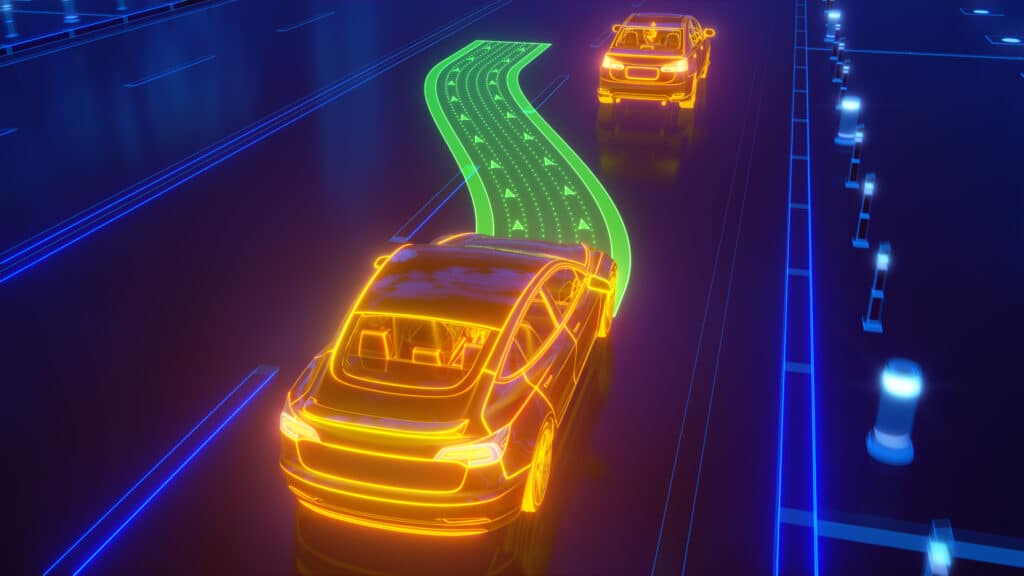Automation levels from 1 to 5 can be seen in almost all types of vehicles manufactured today. Levels 1 and 2 with adaptive cruise control or lane keep assist are the most common types of automation, with level 2 widely available in most regions worldwide. IDTechEx‘s report, “Passenger Car ADAS Market 2025-2045: Technology, Market Analysis, and Forecasts“, explores the ranging levels of autonomy in vehicles, and provides information on the regional uptake and implementation of ADAS features.
The jump between level 2, 2+, and 3
Enhanced level 2 systems (L2+) are increasingly bridging the gap towards level 3 in terms of functionality. In controlled environments such as highways, these systems can offer hands-off driving and advanced features like automatic lane changes and point-to-point navigation. Examples include GM’s Super Cruise and Ford‘s BlueCruise, which operate within mapped geofenced areas to enable a more seamless driver assistance experience. However, L2+ remains classified as a driver assistance system. The driver must always keep their full attention on the road (eyes-on) and be ready to take control immediately. However, L3 introduces ‘conditional automation’ where in specific cases, such as low-speed highway traffic jams, the system can fully take over the driving task. Drivers are permitted to take their eyes off the road but must respond to a takeover request when prompted.
This transition to L3 raises critical legal questions around liability. Unlike L2+, where the driver is always responsible, L3 systems may place accountability on the manufacturer if a collision occurs while the system is operating as intended.
While L2+ systems offer a driving experience that closely resembles L3 in some scenarios, the two remain fundamentally different in terms of regulatory classification, attention requirements, and responsibility in the event of system failure.
ADAS regional adoption
Advanced driver-assistance systems (ADAS) are now present in many new vehicles, with automatic emergency braking (AEB) being fitted into almost 90% of vehicles across the US, UK, and EFTA as of 2023. In July 2023, AEB became mandatory for all new vehicles sold in Europe, highlighting this development as a widespread, new safety standard. IDTechEx’s report covers 14 different ADAS functions across various vehicle types.
Lane departure warnings and emergency lane-keeping systems are also being seen across an increasing number of vehicles, contributing to level 1 and 2 systems in order to comply with regulations, particularly in Europe. Blind spot detection (BSD) is another feature that is necessary for commercial vehicles, that uses up to four radars. IDTechEx’s report, “Automotive Radar Market 2025-2045: Robotaxis & Autonomous Cars” covers multiple uses for radar technology with a vehicle’s safety systems.
The progression of level 4 and robotaxis
Level 4 has been utilized for the commercial deployment or imminent deployment of robotaxis, in multiple US states including California, Nevada, Texas, Arizona, and Georgia. Level 5 has not yet been considered across any region, as this step would see full vehicle autonomy throughout an entire journey with no interference from humans required at all.
IDTechEx provides information on automation levels within the report, and covers in depth cost structures for major manufacturers, giving estimations on total costs across different hardware including cameras, radar, and lidar. Visit IDTechEx’s report, “Passenger Car ADAS Market 2025-2045: Technology, Market Analysis, and Forecasts” and the wider portfolio of Robotics & Autonomy Research Reports and Subscriptions.


